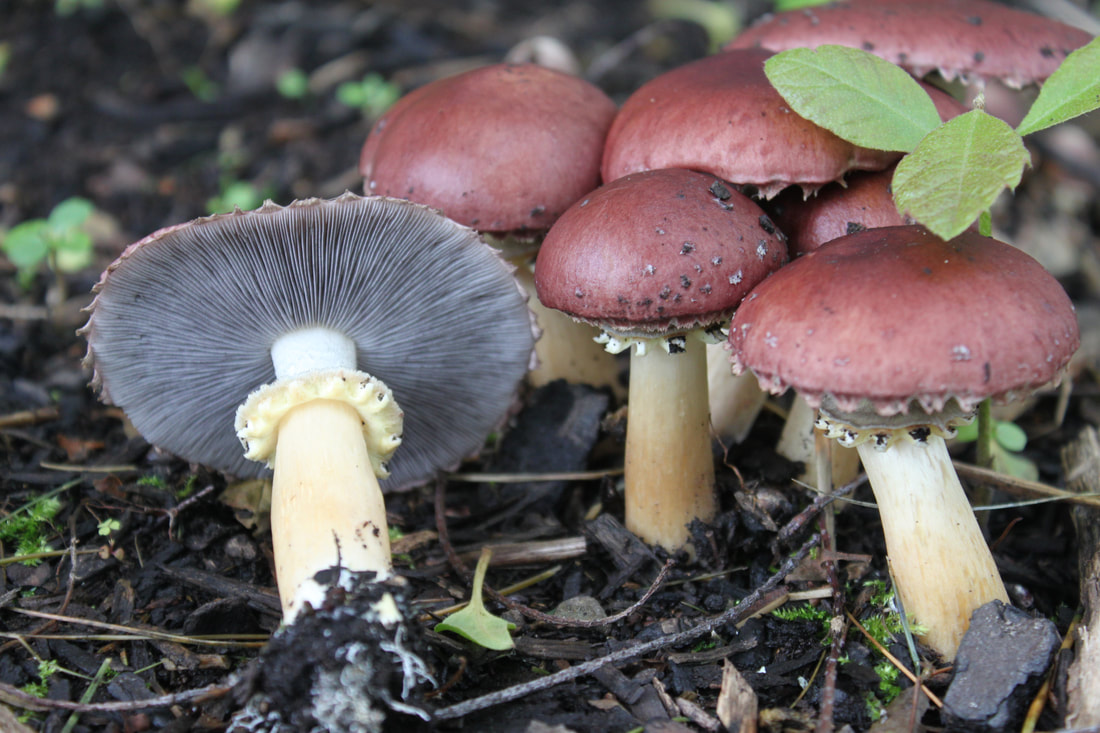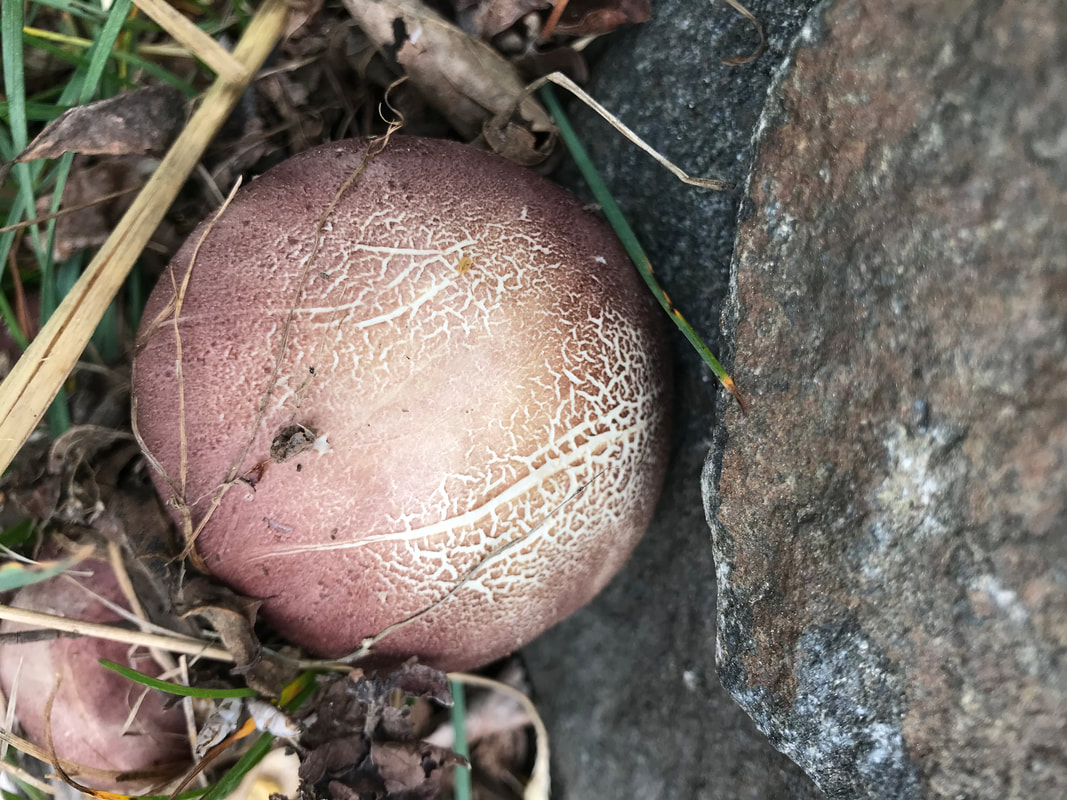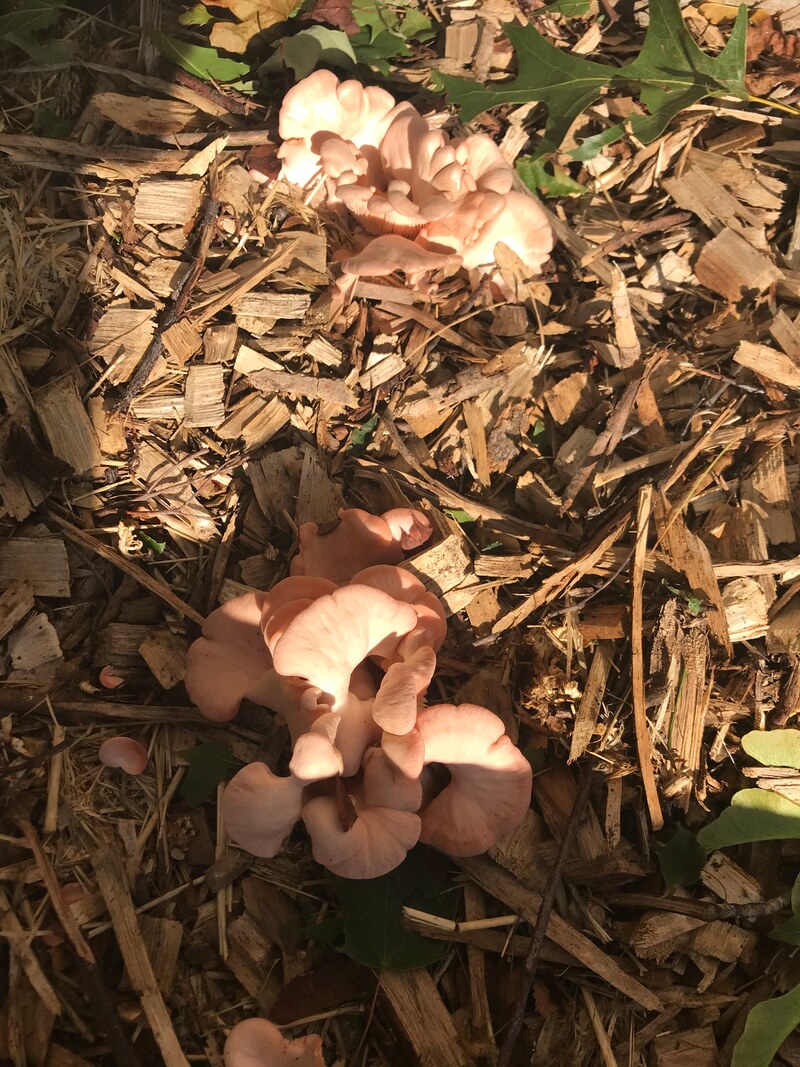|
Is there a poem about heralding spring with the arrival of mushrooms? If not, there should be. Last May, we posted about how to set up outdoor mushroom beds using fresh woodchips and mushroom spawn. Taking the time to do this was super rewarding, and gave us about 2 straight months of oyster mushrooms - enough to eat a few nights a week, enough to give away or barter with, enough to dehydrate or freeze. The post had pictures of our steps in setting up pink and Grey dove oyster beds. Due to some shipping issues, and the fact that a lot of people were suddenly interested in pursuing mushroom cultivation on account of the pandemic, we ended up having a delay in receiving our Winecap mushroom spawn. See below for some photos of the oysters fruiting: The winecap beds were set up in pretty much the same way as detailed in the previous post. Winecap is a slower-colonizing species of mushroom, and add to that the fact that we didn't have as much spawn as we were originally planning for, our beds did not actually fruit last year. I spent a lot of time trying to figure out why. Maybe the spawn was weak. Maybe I didn't use enough of it for the amount of woodchips we had. We saw other kinds of wild mushrooms (and a slime mold!) sprouting in and around these beds. Maybe they had just claimed the prize? During the season, I tried a number of other ways to help them along in our yard - we added some spawn to attempt to inoculate our woodchip path in the front yard, and added a little more spawn to our existing beds, all of which showed evidence of mycelial growth - but not the fruiting bodies we were anticipating. So imagine our surprise to come outside about 10 days ago and see this huge stand of mushrooms, which burst through the ground at the edge of a vegetable bed so strongly that it pushed a lot of woodchips out of the way. (Note: this happened about 20 feet from the bed we actually set up. Since this first flush, we've seen some appearing at the edges of the beds we actually 'planted' last spring). These are delicious, hearty mushrooms that can be prepared a variety of ways. When sautéd, they produce quite a bit of liquid, and it's best to cook them until more of the liquid evaporates, especially if you're going to add this to another dish. They make a phenomenal base for a soup. The flavor is generally described as somewhere between potato and asparagus - if you get them young, as pictured above, they have a bit of crunchiness, which is a nice texture. So far we've made risotto and soup with them, and they made an excellent addition to a burrito filling too. Because they look more like the traditional mushroom, with traditional cap and stem (and because they seem to wander a bit from where they were originally planted!) these can be a little harder to identify. They're called Winecap for the reason that their color starts with this deep, dark red - but if they spend a little time with direct sunlight, the cap can easily turn brown and cracked as pictured here. It's still safe to eat! But it goes without saying that with any wild mushroom, you want to be 100% sure of what you're eating. Oysters are a little harder to mistake for other species, especially ones that tend to appear in a yard. But winecaps have other distinguishing characteristics, as pictured below: the lavender-colored gills underneath, and also the ring that shows up about an inch or two underneath the cap (the 'crown' of the mushroom, which is also known as King Stropharia). You can take a spore print by removing a cap and laying it gills-down on a piece of white paper, and covering it with a bowl or tupperware container. After about 8 hours, you'll get a 'spore print', and the distinctive purplish brown color will help to confirm your identification.  (photo credit Ann F. Berger, from Wikimedia commons) Cultivating these was a test of patience, but I'm grateful we didn't give up on them. Since the first flush, we've had an abundance of them over the last 11 days. My expectation is that they'll go dormant for a few months and flush again in the late summer - and return again for the next 2-3 years. But they've already defied my expectations plenty!
1 Comment
June Caldwell
5/4/2021 06:10:39 pm
Great explanations and very good pictures !
Reply
Leave a Reply. |
Categories
All
Archives
August 2021
|
Proudly powered by Weebly





 RSS Feed
RSS Feed